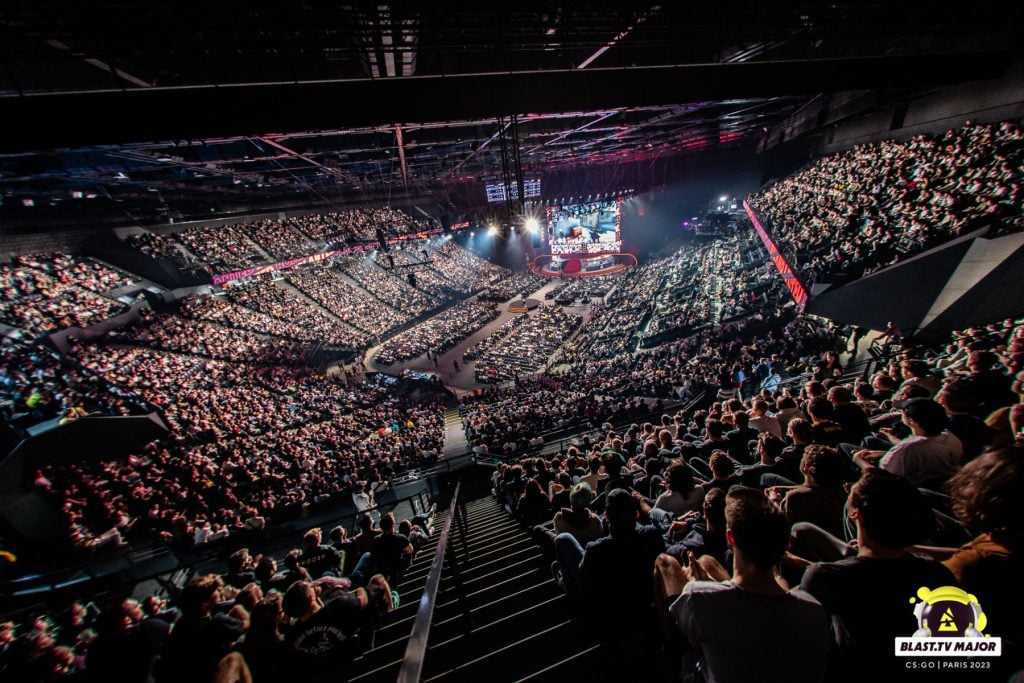How publishers use in-game drops to drive esports viewership

Very few innovations in the esports world have motivated hardcore games to convert to esports viewers quite like in-game item rewards, colloquially referred to as ‘drops’. Almost all major competitions have them: in League of Legends, VALORANT, Counter Strike, Rainbow Six, Overwatch, Rocket League, even Halo.
Drops work by rewarding players with in-game items either randomly or after a certain number of hours have been watched of a given esport, or specific tournament. Viewers who watch the Rocket League Championship Series (RLCS), for example, can earn exclusive in-game items for their cars. It can be as simple as a cosmetic attachment for your gun or as fundamental as a beta pass to a new game: in short, drops bring more eyeballs to a desired broadcast.
As the practice has become more common, different publishers have introduced their own in-game item drop schemes to incentivise viewership.
One of the most notable examples of leveraging in-game drops to draw viewers was in 2020, when Riot Games was launching its then-brand new shooter, VALORANT. To get access to the game’s beta you had to watch certain broadcasts with your Riot Games account linked to your Twitch, a strategy now replicated by many publishers.
It worked like a lottery where any viewer could be the next lucky gamer to get access to the new tactical FPS that all the big names were playing at the time. Thanks to this strategy, and the hype campaign Riot is known for, in the months of April and May VALORANT became the most watched video game on Twitch, beating colossuses like Riot’s own League of Legends and Valve’s CS:GO.
Overwatch 2, meanwhile, also offers a ‘watch and earn’ scheme where players can get in-game sprays, character skins and other cosmetics from watching the Overwatch League. Blizzard’s Overwatch drop system offers a case study in the efficacy of audience retention when using in-game drops. Blizzard said in a recent press conference that 70% of Overwatch players care deeply about collecting the various in-game skins.
When Blizzard put one of their new premium skins as a reward for watching six full hours of competitions, the viewership of that particular weekend of matches jumped by 25%, per data from viewership analytics platform Esports Charts. But for the following week of competitions, where there was no new cosmetic for watching, viewership dropped back down again — by almost 25%.
The same thing happened a few months later but with an Overwatch League-themed skin. The rise and subsequent fall were not as severe (only 8%) but it drew attention to the fact that drops can be a double-edged sword.

Another interesting case study comes from one of the esports with the most loyal fanbases: Halo. When Halo Infinite dropped its multiplayer as a separate free to play experience, the internet exploded and viewership records were broken when the first Halo Championship Series (HCS) Major debuted a few months later.
But in the following weeks, many of the new players — and viewers — lost interest, leaving only the older, dedicated, more loyal core fanbase of the historic shooter. Against this backdrop, developer 343 Industries tried to draw viewers back with in-game item rewards for fans during its 2021 season. However, the audience metrics of the tournament appear to have remained largely unchanged by the presence of drops.
Viewership remained right along its previous average of 55,000-60,000 viewers despite the free cosmetics that the broadcast promoted — an indication, perhaps, that the game’s more established core fanbase was willing to watch Halo esports regardless of drops.
In CS:GO, meanwhile, Valve had long used a drop system to reward viewers of ‘Majors’ — Valve-sponsored events that are the most prestigious in the CS:GO calendar. The drops came in the form of ‘souvenir packages’ that dropped randomly after watching a game, and gained hype and notoriety for their (very low) chance to contain extremely rare skins worth thousands of real-world dollars.

CS:GO Majors have always been the most watched esports events (nine of the top ten CS:GO events by peak viewers were Majors), though it’s impossible to delineate how much of that viewership was driven by drops rather than the prestige and scale of the tournament.
However, Valve has since essentially removed in-game drop rewards for watching majors, instead moving to a system where users buy a digital pass and must correctly guess tournament results in order to get prizes. Despite removing this supposed viewing incentive, the change has not appeared to affect viewership — in fact, CS:GO has seen sizable viewership growth of its Majors since the changes took place.
In-game drops can be a useful resource in understanding the audience of an esport and their motivations for playing and watching. And there’s evidence to suggest drops can boost viewership — at least while they remain active.
Case studies indicate that implementing in-game drops has to be a carefully planned move and be a part of a well-planned strategy in order to avoid fleeting gains. However, the effect is variable across titles, and also depends on a variety of other factors — it is one tool amongst many in publishers’ arsenals to boost esports viewership.


